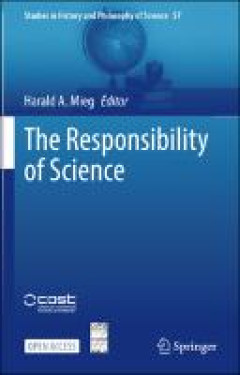Ditapis dengan
E-book Understanding Values Work : Institutional Perspectives in Organization…
Values are fundamental to organisations. Considered key determinantsof attitudes, work behaviour and decision-making, values in organisa-tions have emerged as a topic of growing interest among organisationalscholars and practitioners. By signifying what is desirable or appropriate,values guide the choice of action. However, they do not offer precise orstandardised prescriptions of actions. Orga…
- Edisi
- -
- ISBN/ISSN
- 9783030377489
- Deskripsi Fisik
- 297 hlm
- Judul Seri
- -
- No. Panggil
- 650 ASK u
E-book Researching Values : Methodological Approaches for Understanding Value…
Values are essential to understand but difficult to define. As any set of acts in everyday work is value-driven (Askeland et al., 2020), values can be understood as ‘that which is worth having, doing, and being (i.e., norma-tive goods or “ends”)’ (Selznick, 1992, p. 60). However, if you ask organ-isational members to define their values or elaborate on their organisation’s…
- Edisi
- -
- ISBN/ISSN
- 9783030907693
- Deskripsi Fisik
- 314 hlm
- Judul Seri
- -
- No. Panggil
- 001.42 AND r

E-book The Time of Turath: Authenticity and Temporality in Contemporary Arab …
This study argues for a new view of contemporary Arab thought by analyzing the idea of time that underlies key discussions over Arab heritage (tur?th). Focusing on three authors, it shows how their work was shaped by a linear temporality and how they break with a common understanding of Arab thought by critiquing its temporal basis. This analysis leads to a richer engagement with contemporary A…
- Edisi
- -
- ISBN/ISSN
- 9783110984286
- Deskripsi Fisik
- -
- Judul Seri
- -
- No. Panggil
- 181.92 VIE t
E-book Lords of the Mountains : Pre-Islamic Heritage along the Upper Indus in…
he Northern Areas, synonymous for the Gilgit Wazarat and colonial Gilgit Agency and Baltistan and federally administered by the central government of the Islamic Republic of Pakistan, cover an area of 70 332/72 971/72 496 km². Curiously, this part of Pakistan has been designated also during the Buddhist time as “northern region”, Uttar?patha, as witnessed by an inscription from Shing Nala …
- Edisi
- -
- ISBN/ISSN
- 9783968222691
- Deskripsi Fisik
- 431 hlm
- Judul Seri
- -
- No. Panggil
- 930.15491 HAU l

E-book The Responsibility of Science
This open access book provides an overview of issues of scientific responsibility. The volume comprises three types of contributions: first, analyses of the responsibility of science; second, analyses of the structural conditions for science and its responsibility; and third, normative versions of scientific responsibility. The questions and problems dealt with include science as a profession, …
- Edisi
- -
- ISBN/ISSN
- 9783030915971
- Deskripsi Fisik
- 258 halaman
- Judul Seri
- -
- No. Panggil
- 101 MIE t
E-book Open Heritage : Community-Driven Adaptive Reuse in Europe: Best Practice
There is a wide variety of policies potentially relevant for the community-driven adaptive reuse of heritage assets, which need to be taken into account for an integrated approach. The structural factors include horizontal and vertical policy integration, e.g., across heritage and planning policies, and between tiers of governance (Veldpaus et al., 2020). Moreover, AHR also becomes easie…
- Edisi
- -
- ISBN/ISSN
- 9783035626827
- Deskripsi Fisik
- 217 hlm
- Judul Seri
- -
- No. Panggil
- 720.288 HEI o
E-book Marine Resources, Climate Change and International Management Regimes
The world’s oceans are already feeling the impacts of global warming. How may this affect the international management of marine living resources? In this book we examine the challenges that warming oceans pose to institutions for managing fish stocks that are shared by several states or straddle the high seas beyond national jurisdiction. Special atten…
- Edisi
- -
- ISBN/ISSN
- 9780755618378
- Deskripsi Fisik
- 329 hlm
- Judul Seri
- -
- No. Panggil
- 577.7 HON m
 Karya Umum
Karya Umum  Filsafat
Filsafat  Agama
Agama  Ilmu-ilmu Sosial
Ilmu-ilmu Sosial  Bahasa
Bahasa  Ilmu-ilmu Murni
Ilmu-ilmu Murni  Ilmu-ilmu Terapan
Ilmu-ilmu Terapan  Kesenian, Hiburan, dan Olahraga
Kesenian, Hiburan, dan Olahraga  Kesusastraan
Kesusastraan  Geografi dan Sejarah
Geografi dan Sejarah